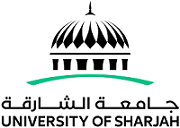Antimicrobial and antioxidant activities of different accessions from crullus colocynthis fruits in the UAE
Linked Agent
El-Keblawy, Ali,, Thesis advisor
Soliman, Sameh, degree co-, Thesis advisor
Alternative Title
التأثيرات المضادة للميكروبات و المضادة للأكسدة لأفراد مختلفة وراثيا من ثمار نبات الحنظل بدولة الإمارات
Date Issued
2021
Language
English
Keyword
Thesis Type
Thesis
Abstract
Citrullus colocynthis (Cucurbitaceae) is an important medicinal plant traditionally used in the United Arab Emirates (UAE). Different accessions of the same population of C. colocynthis growing in the hot arid desert of the UAE show variations in fruit size, color, and stripe pattern on fruit rinds. This study assessed the genetic variations among these accessions and its impacts on the seed morphology, seed dormancy, and germination, also its effect on the total phenolic content (TPC), antioxidant and antibacterial activities of different parts (rind, pulp, and seeds) of fruits collected at different times of the year (e.g., summer and winter). Fruits from 12 accessions that differed in fruit size, color, and stripe pattern were collected from a natural habitat at Al Faya, Emirate of Sharjah. For assessing the effect of temperature and light of incubation on seed germination, seeds of each accession were germinated in three growth chambers adjusted at three temperatures and two light regimes. The results showed that at lower temperatures (15/25℃), little germination occurred in darkness but not in the light. Germination was significantly greater and faster at higher temperatures (25/35℃) than moderate (20/30℃) and lower ones. Random amplified polymorphic DNA (RAPD) analysis was used to assess the genetic diversity in C. colocynthis. The results showed high percentage of polymorphism which varied between 90 and 100%, with polymorphic information content values ranged from 0.28 to 0.37. Few accessions showed high genetic similarities, while most of them showed similarity coefficients less than 0.5. There were moderate to weak relationships between genetic similarities and germination behavior of the different accessions. The TPC, antioxidant and antimicrobial activities were assessed using ethanolic extracts prepared from different fruit parts (rind, pulp and seeds) of fruits collected in summer and winter from 3 accessions grew in the botanical garden of the University of Sharjah.;The TPC was qualitatively determined by "Folin-Ciocalteau assay", while the antioxidant capacity was analyzed using 2,2-diphenyl-1-picryl-hydrazyl-hydrate (DPPH) radical scavenging ability. The metabolic profiling of the related antioxidant metabolites was determined using gas chromatograph -mass spectrometry (GC-MS). The results showed that TPC and DPPH free radicle scavenging activity varied between seasons, accessions, and fruit parts. The phenolic contents were higher in the rinds of fruits collected in winter. However, the DPPH free radicle scavenging ability was higher in the seeds of fruits collected in summer. The results from the metabolomic analysis revealed the presence of 29 metabolites with significant antioxidant activities relevant to fruit parts and season. The antibacterial activity of (rind and pulp) parts of C. colocynthis fruits collected in summer was assessed using spotting assay against the Gram-positive Staphylococcus aureus and Gram-negative Escherichia coli. Rinds and pulps showed positive effects against S. aureus, but not against E. coli. The minimal inhibitory concentration (MIC50) was calculated using microdilutions assay against S. aureus. The MIC50 of rind and pulp of accession#10 was 200 μg/ml compared to 350 μg/ml for the rind of accessions 6 and 13. Metabolic profiling showed the presence of 32 compounds with antimicrobial activity 13 were recorded only in the rind but not in the pulp, 3 in the pulp but not in the rind, and the other in both. The overall results indicate that antioxidant and antimicrobial activities of C. colocynthis differ depending mostly on fruit part and accessions. These results can help in selecting the most suitable time for fruit collection and fruit part that could be used as herbal medicine.;الحنظل هو نبات طبي مهم، من الفصيلة القرعية، كان يستخدم في دولة الإمارات العربية المتحدة في الطب التقليدي لعلاج العديد من الأمراض. لوحظ وجود أفراد مختلفة في تجمع واحد من نبات الحنظل الذي ينمو في صحراء الإمارات الحارة و القاحلة، وقد أظهرت هذه الأفراد اختلافات في حجم و لون الثمار و نمط الخطوط على القشرة.أثبت هذا البحث أن التنوع الوراثي في الحنظل هو
Member of
Category
Theses
Library of Congress Classification
QK495.C96 N33 2021
Local Identifier
b13987665







